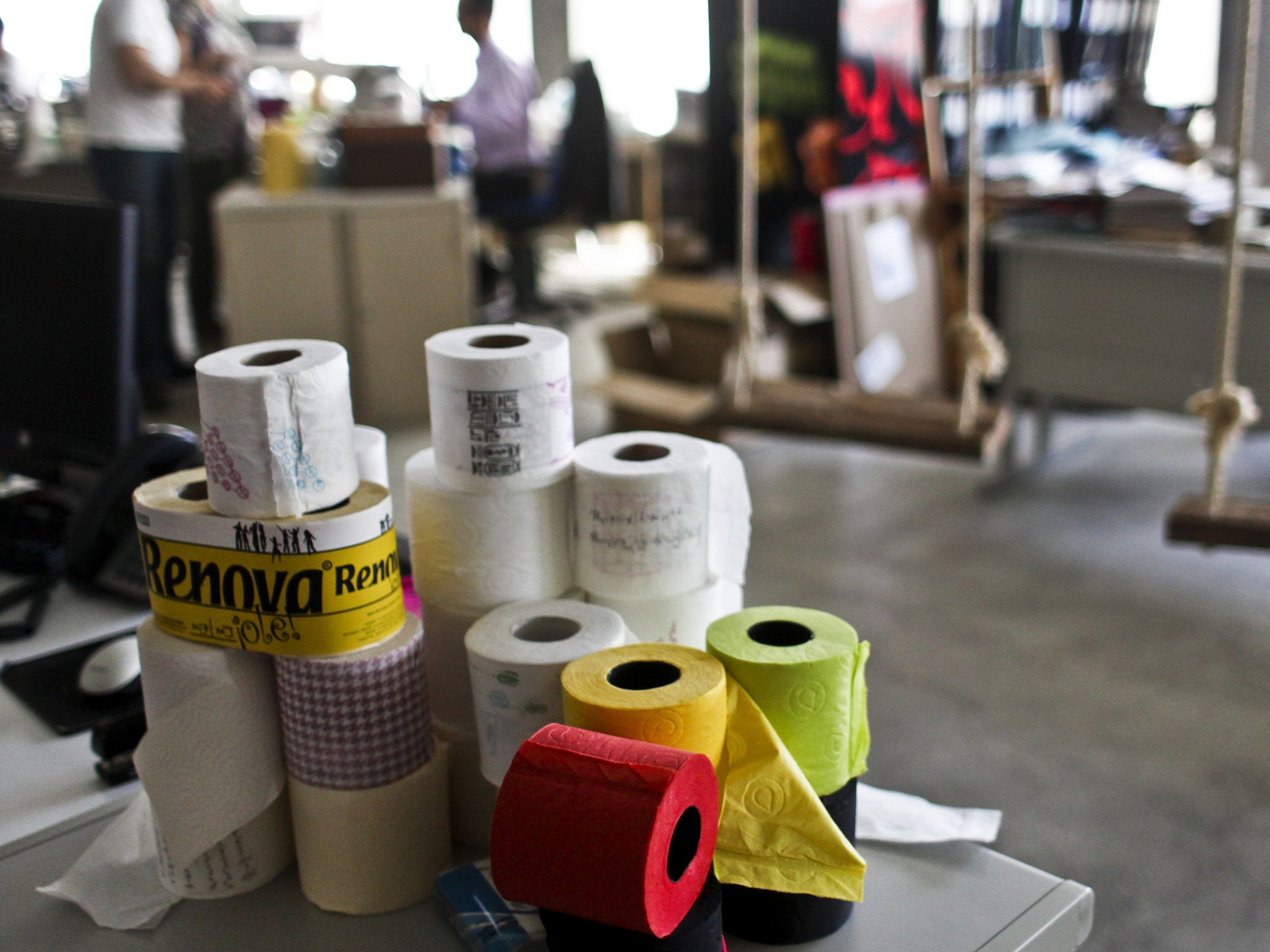On a roll: why the bottom line is booming in the world of toilet tissue
Alasdair Fotheringham, in Barcelona, attends Tissue World, the global gathering of the elite in one of the few recession-proof industries

TissueWorld is the most important annual congress on the planet for what some coyly call "the soft hygienic tissue paper business". But despite the huge white banners flapping on the walls of Barcelona's Gran Via trade fair centre last week, and the impressively long queues for business clients to pick up their accreditations in the vast entrance lobby, a fair percentage of the 175 or so exhibitors find any media interest bewildering.
"You're gonna write about us?" one top American producer says before almost sniggering: "Well, it's going to be a really boring article ..." And indeed on the accreditation form there is no section for press passes; in Tissue World magazine, lavatory paper is mournfully described as "a commodity product distinctly lacking in glamour".
But why be so bashful, when tissue paper provides a few gleams of light in southern Europe's singularly gloomy economic tunnel?
Take Spain, where tissue paper is one of a handful of industries beating the current recession, with overall sales up 2 per cent in 2012. Or Portugal, where the Renova company has just come up with what they claim to be "the sexiest toilet paper on Earth" (to me it just looks black). Even in Greece, one top tissue-paper producer has turned heads by installing a biomass burner in his factory, to beat soaring fuel prices. All this in an industry with 4 per cent annual global growth and an $80bn trade turnover.
People's preferences for their nether regions' cleansing accoutrements chime with clichés about national character quite as much as more visible "lifestyle choices". Germans, industry insiders say, like their lavatory paper strong and uncompromising.
Italians have a weak spot for pretty paper designs and a softer texture, with plenty of niche products (in more senses than one) such as handbag-sized packets. (Italy is also home to the archaeologist Silvio Fioravanti, who has the world's largest pocket hankie collection – 11,972 and counting. But that's another story.)
We Brits, true to our reputation abroad for being boring and sensible, are far less fussy about style, size or texture – we just want to be 100 per cent sure we are getting value for money each time we heave a 16-roll package into our supermarket trolleys. And perhaps we are right to be. "I can show you data that would clearly blow your mind," one industry insider says, perhaps overstating his case a little given the subject matter, "showing how the cost-cutting supermarkets came to these big suppliers and said 'I need you to have this price point for this package with so many rolls in it.'
"So what they did was reduce the length of the pad and each sheet, packaged it exactly as they wanted and in fact you're paying 15 per cent more on average." But only if you're not careful when buying: "If you look at the packaging," he warns, "you'll see it."
As anybody fumbling hopefully in search of tissue in a public restroom in Spain knows, thanks to government cuts lavatory paper is becoming increasingly thin on the ground. But the recession has had some positive knock-on effects for the industry.
Kimberly-Clark's line of mini, wet-paper packs that was introduced last year has now cornered 5 per cent of the local market, thanks to the packets' portable nature, not to mention the unforgettable name of Culitos Besables (Kissable Bottoms). Other booming mass markets include China (the biggest there is for very functional, plain types of paper), where thanks to urbanisation, the market is growing by an average of 8.3 per cent per annum and is expected to continue increasing at that rate until at least 2021.
Subscribe to Independent Premium to bookmark this article
Want to bookmark your favourite articles and stories to read or reference later? Start your Independent Premium subscription today.

Join our commenting forum
Join thought-provoking conversations, follow other Independent readers and see their replies